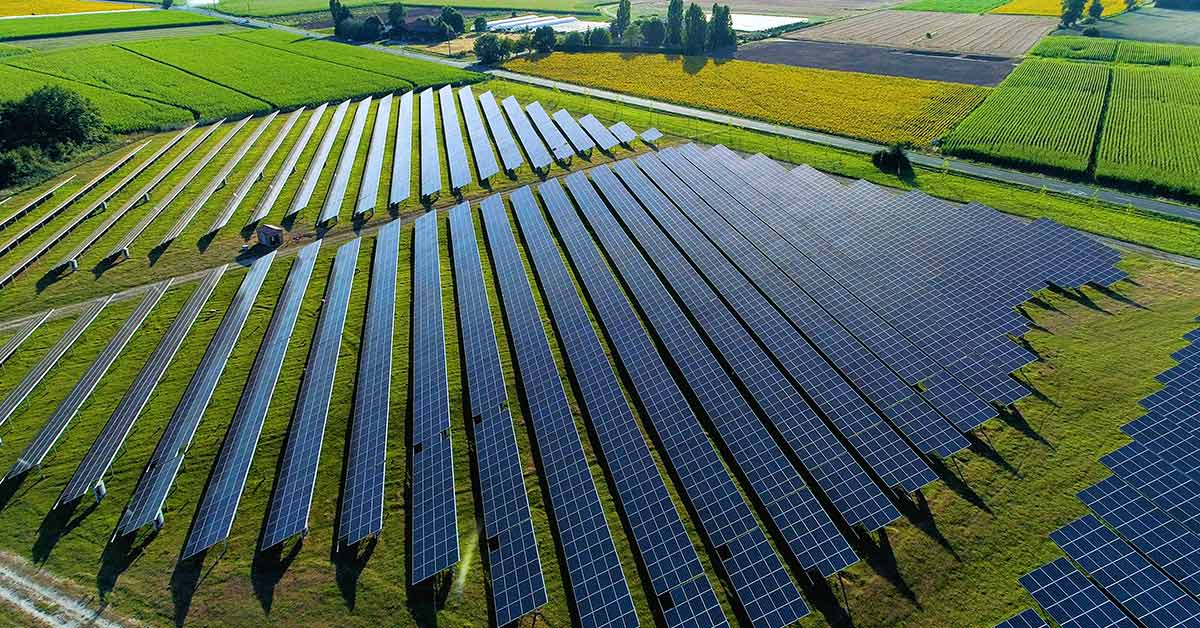Some farmers harvest energy in addition to their crops. Take Fabian Karthaus, for example. His father built a photovoltaic system (solar panels) on the roof of their barn when Karthaus was a child. At the age of 33, the farmer keeps two large solar power systems in his field. Berry crops grow underneath one of them. However, farming is just his side job. He works during the day as an electrical engineer for agricultural electronics because “I can’t feed a family with the earnings from growing 80 hectares of field beans, grain, rapeseed, and corn crops.” However, the two things have come together. The farmer attributes the berry crop’s success to the solar power panels.
Putting Solar Power in the Fields
The idea of growing berries under a solar panel with translucent modules began when “My wife and I started thinking about how we could continue to operate the farm in a meaningful way,” said Karthaus. “We thought about which kind of berry goes with what sort of light and shade. Blueberries and raspberries are woodland plants, so that works really well.”
Keep in mind that these plants are usually grown outside or in foil tunnels. However, when Karthaus’s first harvest was good, he began to attribute part of this to the shade from the solar power panels in the fields. His farm in Germany faces extremely hot summers that are detrimental to plants. But the modules help reduce evaporation from the plants, saving water. “We once measured it here. The evaporation is about a quarter compared to plants in the open field,” he said.
Of course, these modules are more than shade for the berries. They generate about 640,000-kilowatt hours a year, which can provide 160 households with electricity. Karthaus uses this power for his own needs, including the refrigeration and freezing systems for the farm, and saves himself money. “It’s a win-win situation for everyone. It means that we can generate green power locally, decentralized, where the energy is consumed,” says Karthaus.
Read: Flamethrowing Tractors: A New Weapon in the War on Weeds and Pests
The Benefits of Solar Energy Combined With Farming
While this is the perfect system for the farm in Germany, it may also be optimized around the world. In fact, this system of providing food and energy is called “agrivoltaics” and Max Trommelsdorff, an expert in agrivoltaics at the Fraunhofer Institute for Solar Energy Systems, and his team aid governments to achieve it.
Naturally, factors like light conditions, demand for electricity, etc, vary from country to country.
“There are big regional differences: It depends on what is being grown, what the climate zones are, what the rural structures are,” Trommelsdorff explained. But the most important factor is what can photovoltaics do for the area and how could it be best integrated.
There are already photovoltaic plants in Asia, Europe, Mali, Gambia, and Chile. The largest one is in China with a capacity of about 1,000 megawatts. There, they cultivate goji berries under their modules near the Gobi Desert to make the earth more fertile. Additionally, similar plants in France use this method for growing grapes for wine.
“Many grape varieties get too much sun and heat due to climate change,” Trommsdorff said. “Shade can bring some benefits here.” [1]
One study found that many farms could benefit from putting solar power panels in their fields. The shade they provide combats the increased temperatures and drought brought on by climate change, making it beneficial for crops and grazing animals. Additionally, harvesting renewable energy gives farmers more income while reducing fossil-fuel emissions. [2] The National Renewable Energy Laboratory (NREL) supported this system, finding that the modules improve crops while saving water. [3]
Is Agrivoltaics Right For You?
Here’s another example: Julie Bishop raises sheep in Newfield, New Jersey, with limited pasture land. But she got an idea when she drove by a 15-acre solar power panel in a field.
“I thought, that would be a good place for my sheep,” she said. “It’s all fenced in, and I’m sure they’re paying somebody to mow the grass.” Which, she added, sheep could do that chore easily. “They’re just born to weed-whack. Let sheep do what they’re good at, let people do something that’s, you know, not so back-breaking.”
So she contacted the solar company and now she earns money to graze her sheep by the panels. “It really does work,” Bishop said. There’s shade and plenty of grass and clover for the sheep to eat. “All kinds of critters live in here. Mice and moles and voles. It’s food for butterflies and other pollinators.”
Since then, she has renamed her farm, Solar Sheep, which now includes flocks at three solar sites in her area. [4] If you are interested in agrivoltaics for your own farm, the U.S. Office of Energy Efficiency & Renewable Energy created an online “Farmer’s Guide to Going Solar”. This guide will help you determine if solar power is a good fit for your fields.
Keep Reading: Why Independent Farming in America Is Close to Extinction
Sources
- “Power Above, Berries Below: Farmers Reap Double Benefits With Solar Power in Fields.” EcoWatch. Deautsche Welle. August 10, 2021
- “Farmers reap double benefits with solar power in fields.” Business Insider. Deautsche Welle. August 12, 2021
- “Farms can harvest energy and food from same fields.” Energy News Network. Climate Wire. November 6, 2019
- “How To Have Your Solar Farm And Keep Your Regular Farm, Too.” NPR. Dan Charles. October 9, 2020

